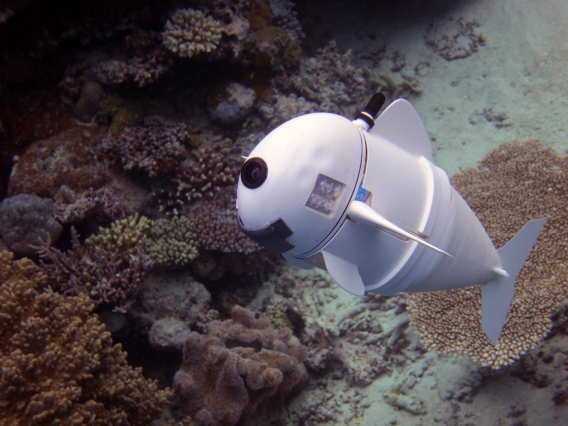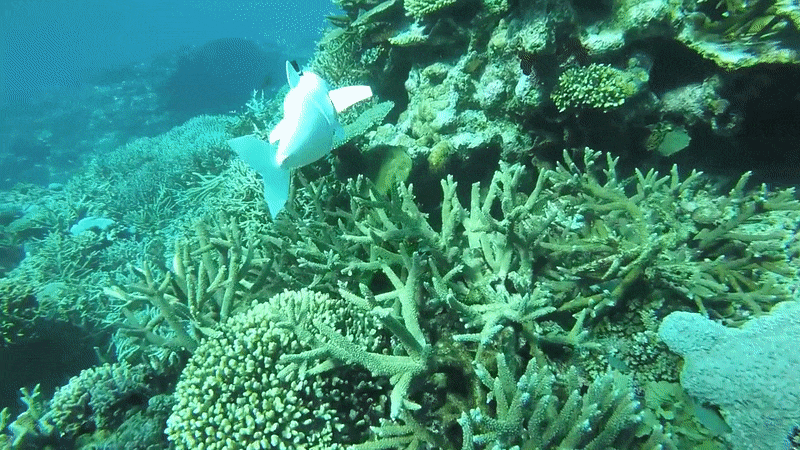Researchers at MIT’s Computer Science and Artificial Intelligence Laboratory (CSAIL), have developed a Soft Robotic Fish, SoFi, made in part with 3D printed silicone rubber.
The robot’s motors make minimal noise and are designed to enable SoFi to swim independently without disrupting marine life. SoFi has successfully completed tests in Fiji’s Rainbow Reef at depths of 50 feet for up to 40 minutes. During testing SoFi navigated corals and currents and took high-resolution photos and video.

Fishy movements
Two fins pitch SoFi up and down, whilst a “buoyancy control unit” compresses and decompresses air, changing the robot’s overall density and enabling SoFi to move vertically. The fish propels itself via a “hydraulically actuated soft fish tail with two internal cavities” made of silicone elastomer. It is designed to simulate the movement of actual fish. Water alternatively fills each cavity causing the tail to flex from side to side, leading to fish-like movement, as seen below. The fish swims at roughly half its body length a second.
The 3D printed head contains all of SoFi’s sensitive electronics, including a fisheye camera, microcontroller, motor driver and depth sensor. The head is kept waterproof by the application of a brush-coating of epoxy, before being degassed.
According to CSAIL PhD candidate Robert Katzschmann, “this is the first robotic fish that can swim untethered in three dimensions for extended periods of time. We are excited about the possibility of being able to use a system like this to get closer to marine life than humans can get on their own.”

Ocean exploration with 3D printing
Keeping with the fishy theme, researchers from Tandon School of Engineering in New York and Politecnico di Torino in Turin have 3D printed a robotic zebrafish, for the observation of marine life.
Arc-Team and the WitLab makerspace are also using 3D printing for ocean exploration. ArcheoROV is their 3D printed remote controlled submarine.
Never miss an article. Subscribe to the 3D Printing Industry newsletter, follow us on Twitter, and like us on Facebook.
Looking to hire? Starting a career in 3D printing? Check out the 3D printing jobs board.
Vote for the Innovation of the Year in the 2018 3D Printing Industry Awards.
Design the trophy for the awards in the 3D Printing Industry Awards design competition, sponsored by Protolabs.


